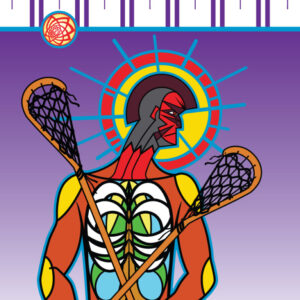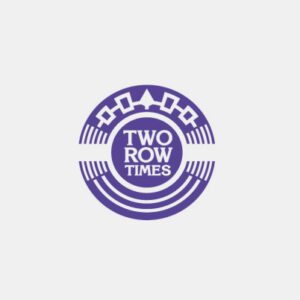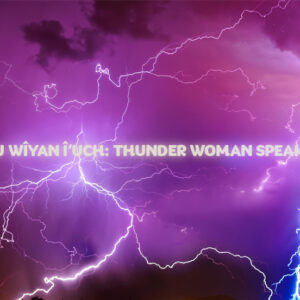
Elections in Indian country are a colonial construct. Prior to settlers, the original people had varied governance systems. In highly complex systems, there were two houses with checks and balances. These governance systems became models for settlers who were setting up new ways of governing themselves on this continent.
When Indians were forced onto reserves, Ottawa used Indian agents to subjugate and control every aspect of life. These Indian agents were often unskilled officials who enforced genocidal tactics of the federal government.
Traditional leadership and hereditary models were soon replaced by Indian agents inserting malleable Indians into positions of chiefs or councils to continue the assimilation or termination agendas of their government. Indian Agents would even insert themselves into meetings when votes were happening. The oppressed now became the oppressors.
It is this background that controls contemporary Indian politics. The Department of Indian and Northern Affairs Canada (DIAND/INAC) controlled Indian Act elections with strict legislation contained within the Indian Act.
Many First Nations voted but continued to follow clan or kinship systems that recognized familial leadership. With colonization, the impact of residential schools, the loss of language and the break down of clan systems, voting on reserve elections began to change.
Families that held the majority of community members could determine the election outcomes. Therefore, ancient Indigenous governance models fell away as specific families manipulated the votes. Ottawa’s answer was to create custom elections, which only applied to the length of term of leadership in council and not to the original governance systems of any one First Nation.
Successive mainstream federal governments have hijacked terms like custom and placed them alongside their regimented assimilation policies since the office of Indian Affairs came into existence. Elections have been no exception.
Elections on reserve involve families. Chiefs and councils elected tend to hire their families or voters because they want to maintain their leadership. The families or voters may be unskilled or negligent in their capabilities but Indian Affairs does not interfere because Indians believe that these elections represent governance.
With this on reserve model comes a similar model for regional or provincial and national levels. The Assembly of First Nations (AFN), originally the National Indian Brotherhood (NIB) was born in a time when First Nation voices needed to unite to stop Pierre Eliot Trudeau and his 1969 termination policy.
Almost fifty years later, INAC’s election model is still being used to oppress the voices of the original people. The Assembly of First Nations has had successive national leaders who are to advocate for the original people in Ottawa. Throughout the years, the distinct needs of various First Nations have been targeted by Ottawa’s one-size fits all legislative packages. Leaders of the Assembly have either challenged Ottawa and seen their funds wither or they have gone along with Ottawa’s agenda and diminished the peoples’ inherent rights at negotiating tables.
This year in 2018, AFN elections for a national “chief” reached a tipping point. Since the Liberal government was elected under Trudeau the younger, promises have been made to First Nations with careful public relations platforms that use the words of the First Nation people in paternalistic contexts.
The “nation to nation” idea is that each First Nation on this stolen state land will be in a negotiation position with the settler government. Justin Trudeau’s federal Liberal government has altered this to mean one nation is the Assembly of First Nations leader and the other is the Minister (s) of Indian Affairs. This is not reconciliation. This is repackaging individual First Nations rights to fit with Trudeau’s termination policy.
In Vancouver, the Assembly of First Nations held an election to elect a national “chief” who is really a national spokesperson. Historically, the spokesperson was to address the concerns of First Nations from the grassroots level and lobby or advocate for this position. The National chief now speaks only to Indian Act elected chiefs and negotiates with Trudeau’s government on issues that affect the collective rights of each and every band member of a First Nation.
This model is not working. It has created an elite class of elected First Nation chiefs and councils that answer only to a specific number of voters in their communities. This is not like a municipal or provincial election. On reserve, families know who voted for them from membership lists. A small family with 30 votes can never outvote two larger families with 100 votes. This election system creates wider gaps on reserve in accessing, jobs, programs or services.
Ottawa sees nothing wrong with this model as alienated families are forced to leave their reserves and seek housing or jobs within Canadian society. This alienation of families leads to social ills including depression, addictions, suicide, criminal activity and hopelessness. Ottawa does not listen. If Indians die off (termination), Ottawa has less Indians to house, and less Indians to provide health care or minimal education for, so it’s a cost saving strategy. Provinces can pick up this tab.
At the Vancouver AFN election, one candidate proposed a change that was like our original governance systems. This was seen as a radical change. Russ Diabo, a Haudenosaunee member tried to give back the Assembly of First Nations to the people. This would mean changes from the ground up that would lead to the original people keeping their dignity and maintaining their connection to the scant land left to them in their reserve communities. Mr. Diabo was met with fierce opposition.
Indian politics is bad when career chiefs and their families’ livelihoods are at stake. Ottawa did not leave this to chance: discussions took place around equity shares in KinderMorgan, the rights recognition act and one region of chiefs was told, “to stay the course”. When Mr. Diabo questioned why the Minister of Indian Affairs was present at the voting assembly, he was met with hostility.
Initially candidate Diabo noted this irregularity but his calls for action were met with unavailable and unreasonable electoral staff, and a questionable ruling while the AFN charter was mysteriously inaccessible on the downed AFN website.
The presence of the Minister, like the Indian agent reminds Indian act chiefs “who is in charge.” The federal presence looks like misfeasance and political interference by a sitting Minister. The vision of Mr. Diabo, who was the chosen candidate of the people, will respond to this wrongful act. Diabo’s truth campaign was not just this election. This was a necessary first step to prove how complicit AFN is in pushing the federal agenda. The global village saw this interference, as did 1,000,000 First Nations across this land, welcome to Phase 2 of the Truth campaign.









